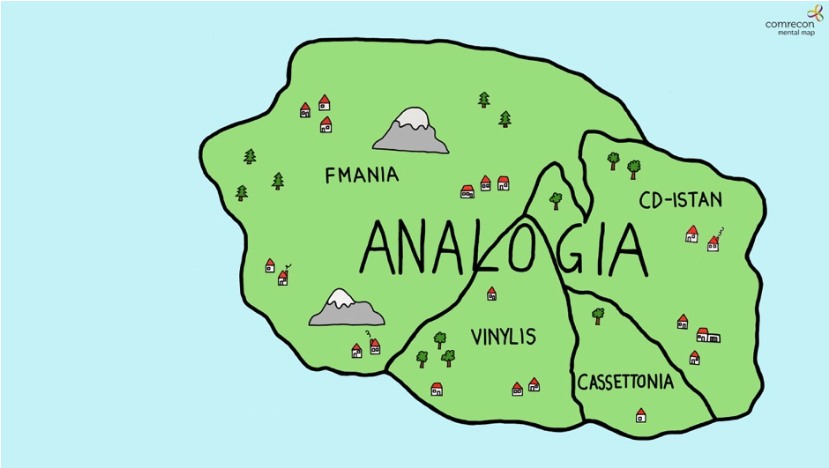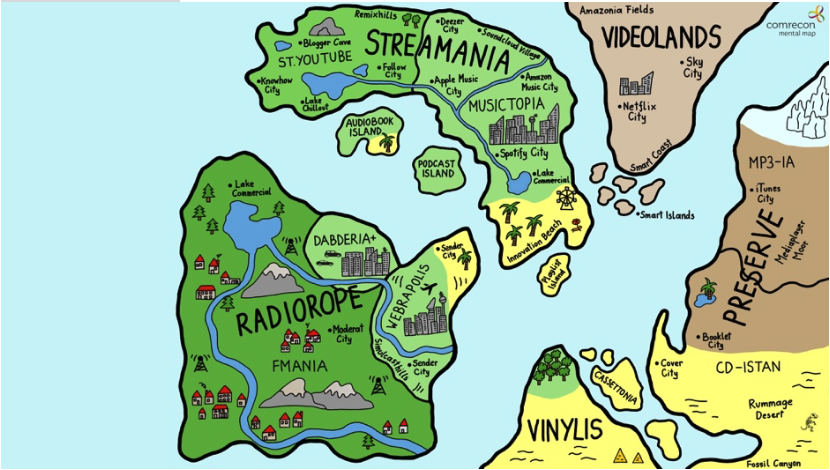Who would not want that? Exploring the future, knowing what will happen, what people will buy. This is one of the biggest challenges. And we’re not talking about the far away future, but mostly about next five years.
By applying conventional methods such as focus groups or interviews, we will always at a certain point face the subjective limits of our subjects’ imagination. What seems insignificant for the individual can still be relevant for others. For example, just because I don’t listen to a podcast myself and I can’t imagine to do so within the next five years, podcasts might revolutionize the audio world (Case: Planet Audio 2025).
In order to anticipate the future, one has to understand current and past user behavior. You may be successful with focus groups or even better using online forums. Forums in particular are an excellent way to uncover rituals, routines and unconscious actions and attitudes. Participants constantly raise awareness, reflecting their own behavior and that of others.
However, other methods are required to study prospective behavior. And that’s when the game appears on the scene. Not just any game, but modeling with LEGO® bricks.
How can we make the collective unconscious visible?
With LEGO® Serious Play® (LSP) we are able to tap into the collective – and not the subjective – knowledge of consumers in a playful way. How does this work? This happens because the participants work on a common prospective vision. For example: The Planet Audio in 2025. We take people to the future and reflect on what happened, what has changed. Not only regarding each individual, but also the community, society, the whole world – depending on the scope in which we operate.
Carefully designed questions on behalf of the research question ensure that participants use LEGO® bricks to create stories in the form of 3D models responding to them. Thus they make use of metaphorical thinking. A stone is no longer just a stone, but it has a meaning that is only understood in this context. The others listen and transfer what they hear and see into an overall model – so we experience co-creation of the anticipated future in the respective context.
Storytelling, conscious listening and conscious reflection enable participants to share inner, unconscious truths, which in turn provide comprehensive and insightful answers to research questions.
Can everyone do that? Theoretically yes, practically no. A trained LSP facilitator who has no research background will not be able to analyze the results any further. A qualitative researcher, or even better a drawing researcher – a semiotic – will. They will transfer what is said into a deeper dimension of insights because even at the non-verbal level, many valuable findings emerge in the course of a process. And the prospective results can be linked to the previously analysed rituals and routines.
LSP is a thinking and problem solving technique in which System 3 is active. System 3 is the system of emotional reactions, self-awareness. By leaving System 1 – the fast decision-making based on intuitive, more impulsive mental processes, and System 2 – the slower decision making originating from cognitive, rational processes, it is possible to reveal deeper and unknown abilities and perceptions.
Case Planet Audio 2025
The question of how people will use audio and audio content in 2025 was investigated In the “Planet Audio 2025” study for RMS Germany, AS&S and Radiozentrale.
For this purpose we carried out two online forums. In total, 98 participants from Germany, across generations X, Y and Z, discussed their current and past audio usage behavior. By the means of different question tools we uncovered unconscious structures and behavioral motives.
Subsequently, two LSP workshops with a total of 16 participants were held.
Combining the collected insights of the two analysis steps (online forums and LSP workshops), the behavior of the present, but also of the past and the near future in 2025 could be researched and described.
The past

The present

The future

In this case, the results were translated into maps of the audio usage – a planet audio was created in the form of mental maps.
The mental map for the year 2025 shows the insights primarily achieved in the LSP workshops:
The Audio Union symbolises the fusion of radio and streaming. Perforated boundaries mark the fact that theoretically there are spatial separations, but these are not present in the user world or may easily be overcome. “Alexa” and the unlimited internet have led to a continental fusion. Podcast Island has become an important island. Media Librana is the artificially created landmass that connects radio and streaming services such as Spotify, Youtube and others.
From the users´ point of view advertising will change: The large mass flow from Lake Commercial has been replaced by individualised flows – symbolised by various forms of the “swimming pool”. Vinylis and Preserve are ancient landmasses from the past and present that will slowly disappear from the planet in the future.
Qualitative research offers a great opportunity to gain insights by making use of playful approaches. LSP alone may not be enough for future predictions if you also want to show developments, especially if you want to understand the here and now in order to take new strategic steps for future developments.
Qualitative researchers who integrate playful approaches into their everyday research will be rewarded with deeper insights. And so will their clients.
This article is based on a presentation given at ESOMAR’s 2019 Fusion event. For the full paper and video, ESOMAR members can go to ANA – ESOMAR Resources Library.


